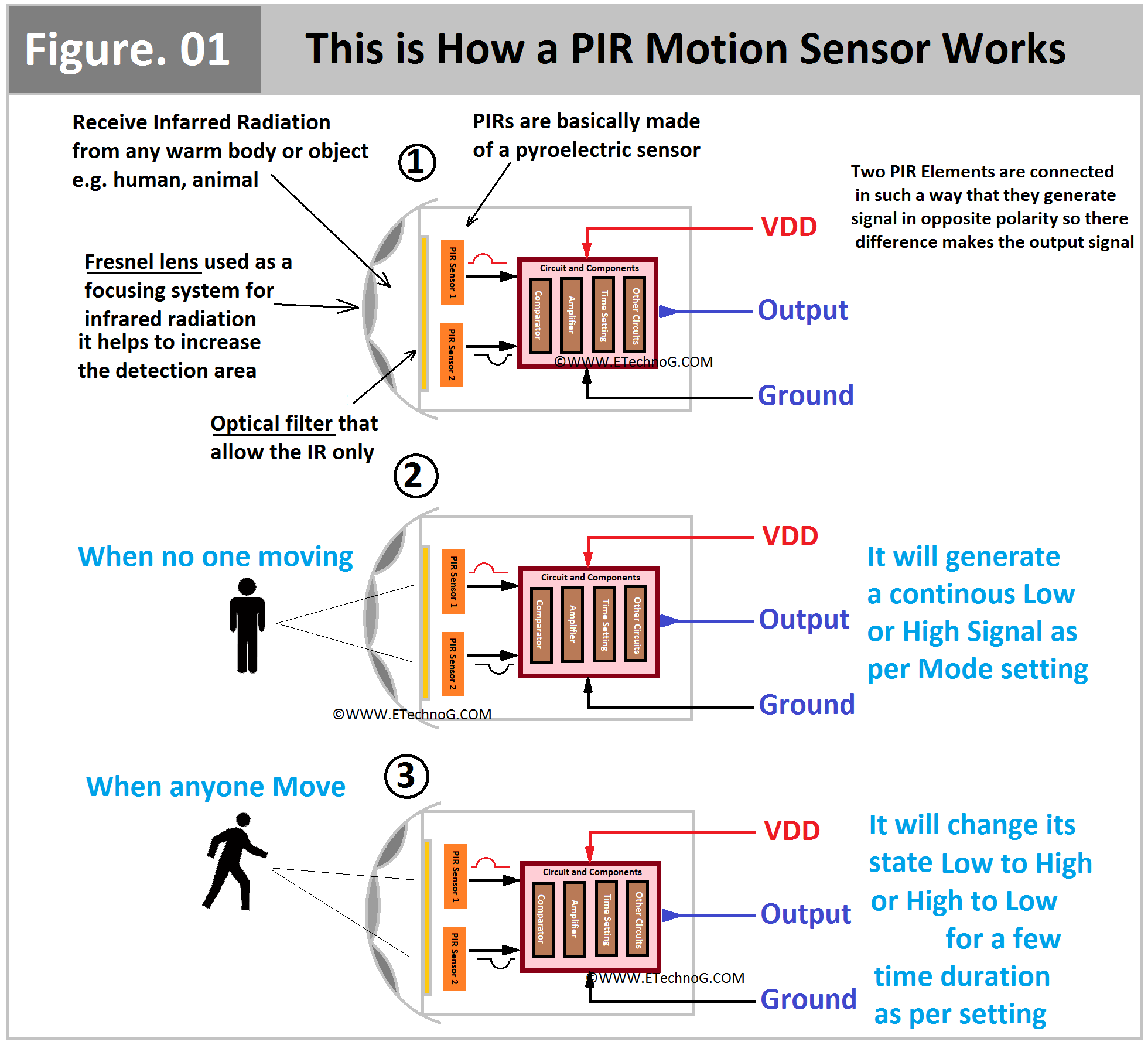How a PIR Motion Sensor Works? Learn with Diagram
Here, in this article, we are going to learn how a PIR Motion Sensor Works. PIR's full form is Passive Infrared. That means it does not generate the infrared it will detect the infrared rays. Remember that any living warmed body or heated object can radiate infrared rays. Motion sensors basically are used to detect the motion of humans or animals because they also radiate infrared rays, so it is a very easy way to detect.
First of all, let's see the diagram which shows the construction and working concept of the PIR Motion sensor.
You can see it is built with different types of physical and electrical parts and components.
The Top lens which is a fresnel lens is used to focus the radiation to the sensing element from a wider detection area. If it is not available, the sensor will not detect properly in a wider area.
An optical filter is used that only allows the infrared rays to go to the sensing element and block other rays. So it helps to increase the sensitivity.
Here two Sensing element is used as the sensor has two segments. This helps to detect the motion. If there is only one sensing element or segment, it only can detect the infrared radiating object, it cannot detect if the object or body moves. The sensing elements are generally made of pyroelectric-sensitive material.
Also, these two sensing elements are connected to each other in such a way that they provide output in opposite polarity to each other.
Now if any person moves he should detect by the sensing element in the manner of one after another. So, at the same time, a single detector will detect more radiation than another or they will generate different outputs.
Now a comparator circuit is used to compare the output of those two sensing elements and it will generate the final output.
The PIR Motion sensor works in different modes and settings. We manually need to set those parameters.
For example, we the sensor does not detect any radiation or motion the output of the sensor will continuously be High or continuously Low as per the setting. It is called the jumper setting.
Now, once the sensor detects radiation or motion it changes the state of the output signal. If the output was Low before then it will make it High or if the output was High before then it will make it Low. But it will do for a few time duration only. And we can set this time duration. After finishing this time, again it will change its state as before.

